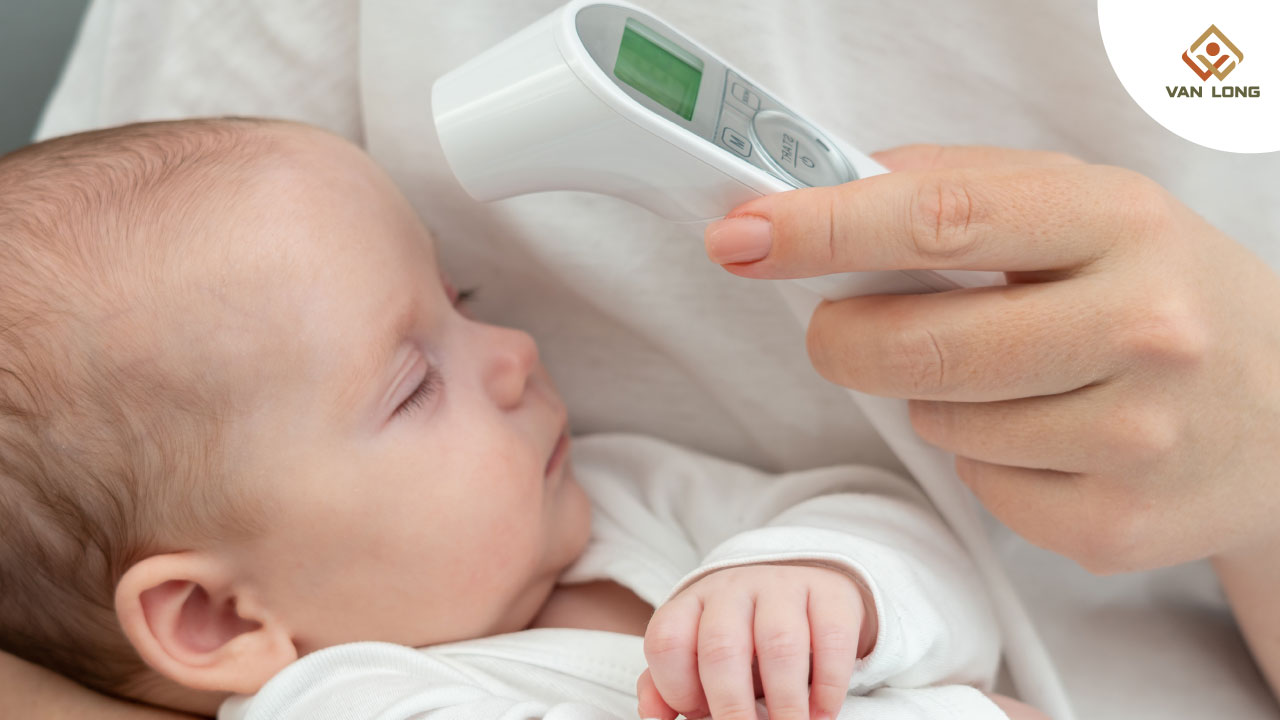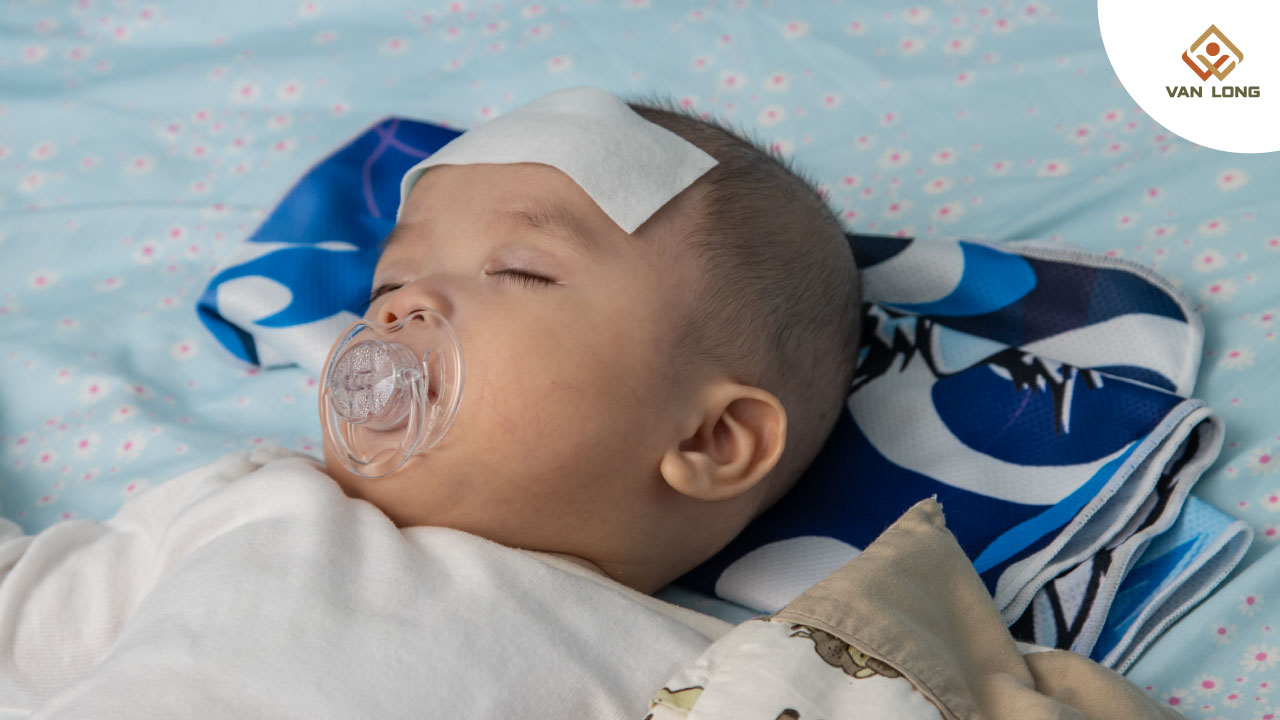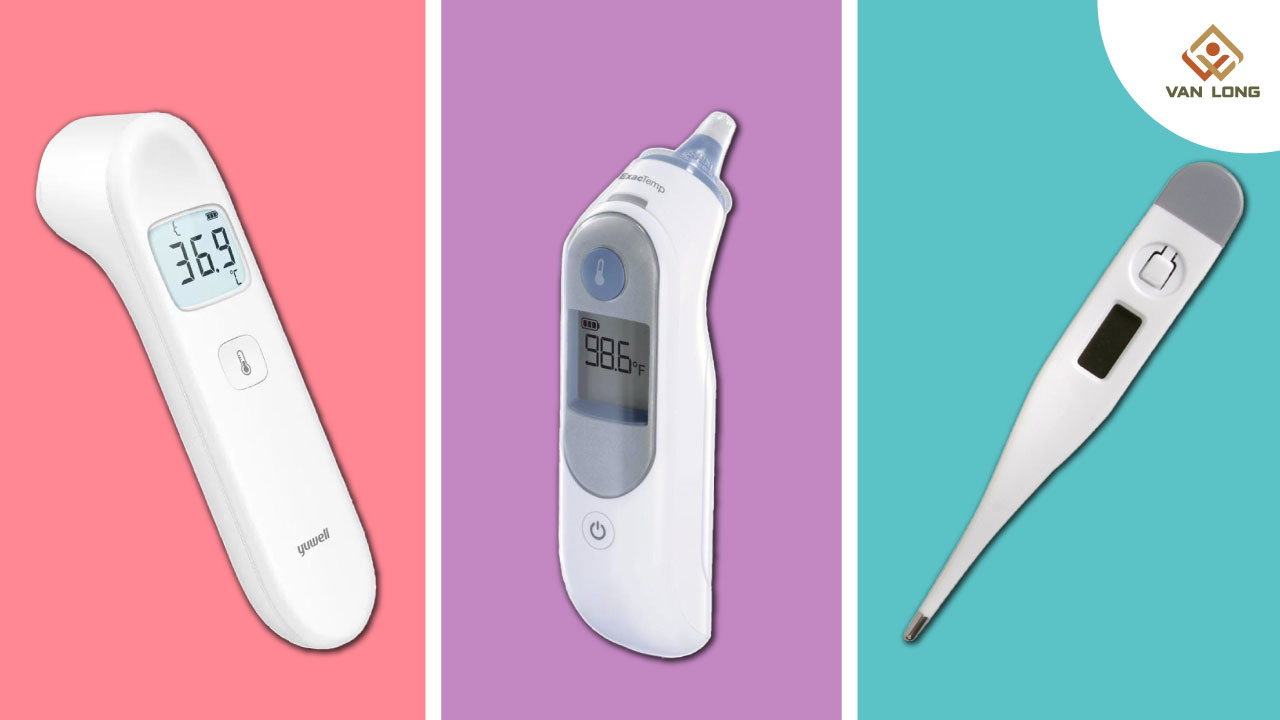Việc chăm sóc trẻ sơ sinh, đặc biệt trong những thời điểm trẻ có biểu hiện ho kèm sốt, luôn đòi hỏi sự theo dõi sát sao và chính xác. Trong đó, việc đo thân nhiệt đúng cách đóng vai trò rất quan trọng để theo dõi tình trạng bệnh lý và đưa ra quyết định chăm sóc phù hợp. Nhiệt kế hồng ngoại là một trong những thiết bị hiện đại giúp phụ huynh thực hiện việc này dễ dàng và an toàn hơn bao giờ hết.

Ho và sốt là hai triệu chứng thường gặp ở trẻ sơ sinh và trẻ nhỏ. Tuy nhiên, sự kết hợp của cả hai có thể là dấu hiệu cảnh báo các bệnh lý nghiêm trọng hơn như viêm đường hô hấp, nhiễm siêu vi hoặc thậm chí là sốt xuất huyết.
Việc theo dõi nhiệt độ cơ thể đóng vai trò như một "bảng chỉ dẫn" về tiến triển bệnh. Nếu thân nhiệt tăng cao hoặc dao động bất thường, đó là dấu hiệu cảnh báo tình trạng bệnh có thể đang chuyển biến xấu.
Do đó, nhiệt kế hồng ngoại với khả năng đo nhiệt không tiếp xúc, nhanh chóng và chính xác là một lựa chọn lý tưởng để hỗ trợ cha mẹ trong việc chăm sóc và theo dõi tình trạng của bé.

Dưới đây là một số bệnh lý thường gặp khiến trẻ sơ sinh bị ho kèm sốt:

Trẻ sơ sinh rất nhạy cảm và thường quấy khóc khi bị bệnh. Việc đo nhiệt độ cần thực hiện nhanh chóng, không gây khó chịu, và đảm bảo độ chính xác cao. Đây là lý do vì sao máy đo nhiệt độ hồng ngoại ngày càng được nhiều phụ huynh lựa chọn.
Ưu điểm nổi bật của nhiệt kế hồng ngoại:
Bên cạnh đó, một số loại nhiệt kế hồng ngoại hiện đại còn có chức năng:
Để đạt được kết quả đo chính xác, bạn cần:
Khi chọn mua nhiệt kế hồng ngoại, bạn nên ưu tiên các tiêu chí sau:

Để theo dõi diễn biến bệnh tốt nhất, phụ huynh nên đo nhiệt độ cho trẻ:
Với nhiệt kế hồng ngoại không tiếp xúc, bạn hoàn toàn có thể đo khi trẻ đang ngủ mà không đánh thức bé dậy.
Mặc dù có thể theo dõi tại nhà, nhưng trong những trường hợp sau, bạn nên đưa trẻ đi khám ngay:

|
Loại nhiệt kế |
Ưu điểm |
Nhược điểm |
|
Không tiếp xúc (hồng ngoại) |
Nhanh, tiện, không làm phiền bé |
Cần đo đúng kỹ thuật |
|
Kẹp nách |
Chính xác |
Làm bé khó chịu, đo lâu |
|
Đo tai |
Tốt cho trẻ >6 tháng |
Không phù hợp cho trẻ <3 tháng |
|
Nhiệt kế ngậm miệng |
Có thể chính xác ở trẻ lớn hơn |
Không phù hợp trẻ sơ sinh, khó sử dụng |
Máy đo nhiệt độ hồng ngoại là lựa chọn ưu việt cho trẻ sơ sinh vì:
Trẻ sơ sinh bị ho kèm sốt là tình huống thường gặp nhưng tiềm ẩn nhiều nguy cơ. Việc theo dõi thân nhiệt thường xuyên và chính xác là cách quan trọng giúp phụ huynh phát hiện dấu hiệu bệnh sớm và kịp thời xử lý. Với nhiệt kế hồng ngoại, việc này trở nên nhẹ nhàng, an toàn và hiệu quả hơn rất nhiều.
Nếu bạn đang chăm sóc bé tại nhà, đừng bỏ qua việc đầu tư một chiếc máy đo nhiệt độ hồng ngoại phù hợp – đó là người bạn đồng hành đáng tin cậy giúp bạn bảo vệ sức khỏe bé yêu mỗi ngày.
——————————
CÔNG TY TNHH PHÁT TRIỂN THƯƠNG MẠI DỊCH VỤ VÂN LONG
YOUR NEEDS - OUR BUSINESS
Hotline: (028) 3526 2468 / 098.484.0440
Email: cskh@vl-groups.com
Website: www.vl-groups.com
Địa chỉ:
- Văn phòng HCM: Tòa nhà Fosco, D35 + D36 - 40 Bà Huyện Thanh Quan, P.Xuân Hòa, TP. HCM
- Trung tâm bảo hành: 373/14 Nguyễn Kiệm, P.Đức Nhuận, TP.HCM
- Văn phòng Hà Nội: Khu VP Hồng Hà, 38.3/1 Ngõ 109 Trường Chinh, P.Phương Liệt, Q.Thanh Xuân, Hà Nội
- Kho Tổng: 938 Quốc Lộ 1A, P.Linh Xuân, TP.HCM
🌼 Shopee: https://shopee.vn/vanlonggroups
🌼 Tiktok: https://www.tiktok.com/@thietbichamsocsuckhoe
🌼 Tiki: https://tiki.vn/cua-hang/cham-soc-suc-khoe-van-long
🌼 Lazada: https://www.lazada.vn/shop/van-long-our-needs-your-business